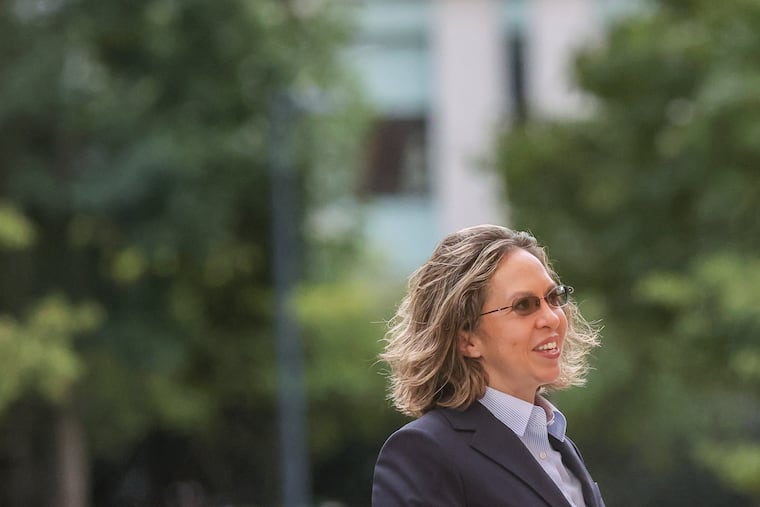‘Health is not only determined by health care’: a Q&A with the interim dean of Drexel University’s Dornsife College of Public Health
Gina Lovasi speaks about teaching public health after a pandemic that brought the subject into wider public consciousness than ever before.

Gina Lovasi, the interim dean of Drexel University’s Dornsife College of Public Health, recently welcomed the school’s latest class of public health students.
Lovasi, who’s been at Drexel for seven years, formerly ran the school’s Urban Health Collaborative, a research center that aims to improve public health outcomes and reduce disparities in cities. She then served as the school’s associate dean for education and was named interim dean of the college in June.
She spoke with The Inquirer about teaching public health in 2023 — after the COVID-19 pandemic brought the subject into wider public consciousness than ever before.
This interview has been lightly edited for clarity and brevity.
The pandemic made people more aware of the field of public health. What effect has that had on the school?
One of the ways that’s been showing up for us is that we have a lot more students interested in taking our courses. So we’ve gone through a process of making sure that we’re welcoming to all the learners, even ones that are based in majors outside of public health, who want to take one or more public health courses while they’re here.
Sometimes that does result in people transferring into public health as their major. So we’ve been excited to see that growth, and we’re working on making sure that we have the ability to provide an excellent experience as courses grow. We offer more courses, more often, so we have them both in person and online, to give flexibility to meet learners where they are.
How has the pandemic changed your approach to educating students about public health?
We have a need to train people and share that health is not only determined by health care. I think the inequities that we saw in who was most likely to experience infection and death from COVID-19 — it reinforces the long-standing commitment that our school has to looking at social determinants of health.
It’s not just about whether you get a COVID test, or whether you get a vaccine, but whether your workplace environment is supportive of staying home when you’re sick, whether you have a neighborhood environment that supports a healthy lifestyle that keeps you from having some of the risk factors we know exacerbated COVID-19 infection and mortality risk.
It’s not only the pandemic that has [inspired] people to come into public health. I had a student who had been involved in the Flint water crisis. We have students who have come from clinical practice, who have come from social work. Coming in and wanting to address inequities is a theme that I hear really strongly from our students.
What is Dornsife’s relationship with the community — here in Philadelphia and outside the city?
In West Philly, we have the Promise Zone projects that are about having a supportive environment, from cradle to career, for people who live in our vicinity, and making sure we’re serving that area. As we broaden out to more of Philadelphia, we have student placements with community organizations, including the Philadelphia health department. Some of our students are also placed in and serving public health-related work in other parts of the U.S. — we have several important global programs where students support, for example, water and sanitation work.
What are the most pressing public health concerns in Philly? How should public health officials and students prioritize addressing them?
There are different ways to decide how to prioritize [public health concerns]. To me, what’s been interesting and surprising, is that I think there’s been a shift between wanting to rank which diseases are causing the most death and disability to thinking about which areas for potential action have the best reach to make improvements.
This fall, I’m teaching an Introduction to Public Health class. We go through the leading causes of death, these different metrics that help us to prioritize — like, which are causing the strongest health burdens? Cardiovascular disease, COVID-19, stroke, cancer, injury, are often among the strongest causes of death. Substance-related deaths and violence are also very salient.
But what I see as newly possible in public health is shifting to [studying] some of the broader threats to health and society. I’m thinking about the ways we could bring resources to have neighborhoods that meet the needs of the residents, in terms of housing, access to goods and services, clean air and water. If we could find ways to reduce violence and trauma in people’s lives, we would see benefits across a lot of categories of health outcomes — the diseases that we usually categorize our work by.
That hasn’t been the way we [traditionally] organize our work. But I think we have a lot of potential within our school to address those [threats].